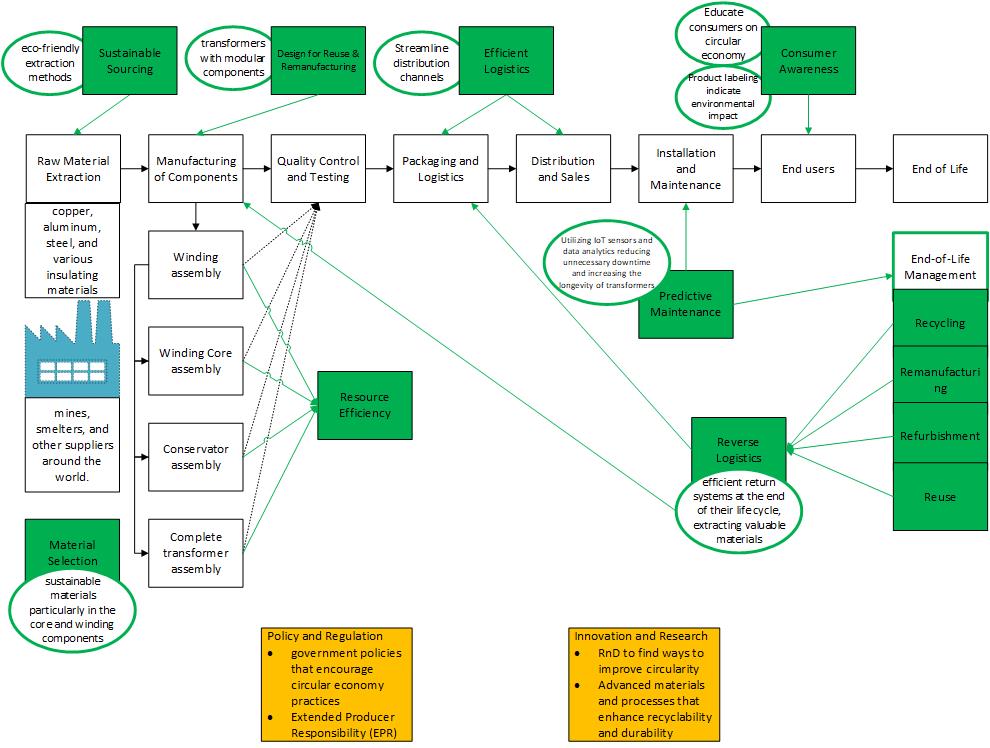Supply Chains and Circular Economy of Power Sector
The transition towards a circular economy has gained attention worldwide as a means to achieve sustainable development goals and mitigate the environmental impacts of traditional linear production and consumption systems. This project aimed to further the transition by investigating the potential for a circular economy for transformers in Sub-Saharan Africa.
As part of this research, a life cycle analysis of transformers was conducted, assessing the carbon associated with each stage of the life cycle. The results showed that the emission factors for material extraction and assembly were higher for steel, copper, and iron. This suggests that there is a significant opportunity to reduce carbon emissions by adopting circular economy practices for transformers and can be targeted at specific components.
The materials used in an obsolete transformer can be injected back into the supply chain, providing financial savings and minimizing lost-opportunity costs. This can be done by rethinking how transformers are disposed of, such as by collaborating with suppliers, reducing reliance on virgin materials, and exploring refurbished products. Ethical and environmental benefits of using recycled materials and repairable products should also be considered.
External drivers for electric utilities to adopt circularity include reducing carbon emissions, increasing supply chain resilience, and addressing challenges of globalization and rapid urbanization. The benefits of circularity for businesses also include optimizing material use, accessing new revenue streams, and mitigating supply chain risks.
The project concluded by recommending a circular economic model for transformers in Sub-Saharan Africa, integrating the 4Rs: repair, refurbish, remanufacture, and recycle. The decision of which path to take would be made using a decision matrix that considers the strategic aspect, cost-effectiveness, severity of damage, and environmental impact of the circularity concept. The project also recommended a sustainable supply map for the transformer lifetime that integrates circular economy practices throughout the supply chain.

